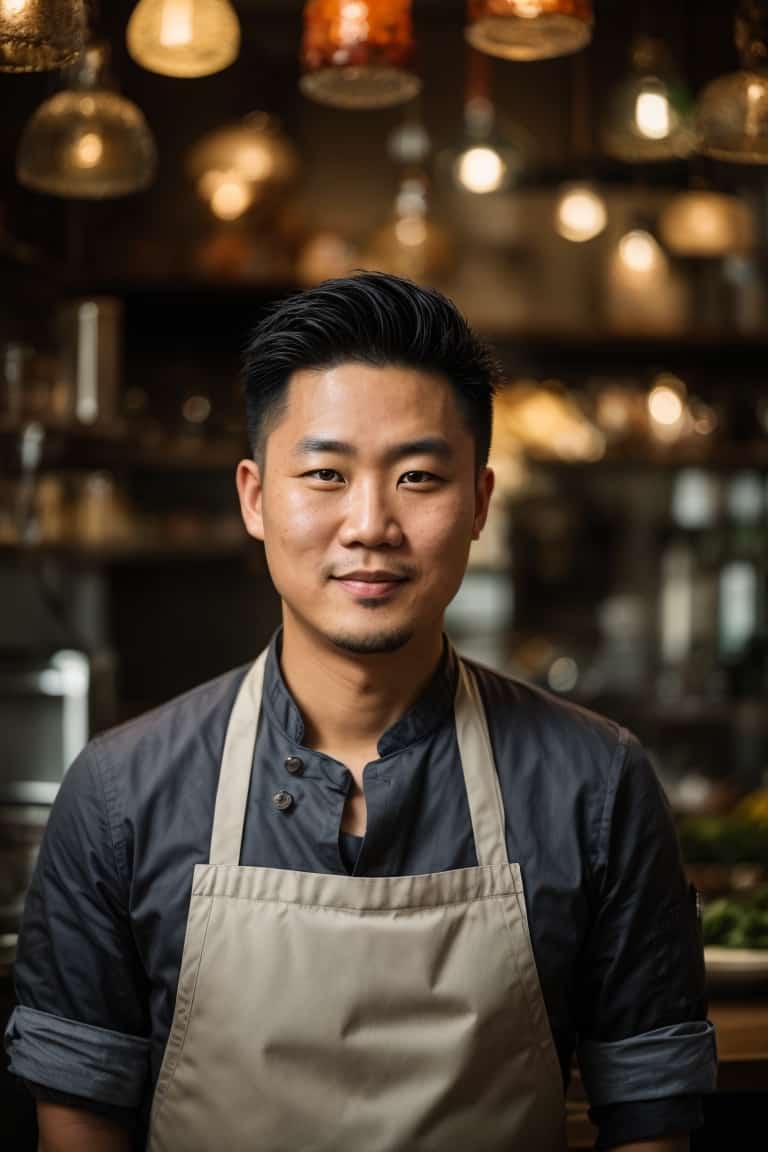Key Highlights
- Cultural Fusion: Haitian cuisine is a vibrant blend of African, French, and indigenous Taíno influences, creating a palette of bold and flavorful dishes.
- Staple Ingredients: Essential to its distinctive flavors are root vegetables, scotch bonnet peppers, and thyme, which lend depth and complexity to the cuisine.
- Breakfast Delights: Mornings begin deliciously with dishes like mayi moulen (cornmeal porridge) accompanied by spicy gravy.
- Signature Main Dishes: Celebratory meals often feature griot (roasted pork) and soup joumou (pumpkin soup), dishes that are central to Haitian culinary traditions.
- Street Food Scene: The streets buzz with vendors offering pate kode (Haitian pies) and marinad (fried fritters), capturing the essence of Haiti’s vibrant street food culture.
- Delectable Desserts: Meals typically conclude with sweet treats such as pen patat (sweet potato pie) and douce macoss (creamy spiced coconut dessert), which are staple favorites.
Journey back to Haiti
The first time I tried Haitian food was with my friend Jean — big-hearted and with a laugh that fills the room. He’s proudly Haitian and loves to share his heritage through food. That day, the scent of thyme and cloves was in the air, and the comforting earthiness of the simmering root vegetables promised an unforgettable meal.
As we sat in his cozy kitchen, Jean began to explain the staple foods. Holding up a yam almost as big as his forearm, he laughingly explained that these, along with sweet potatoes and taro, form the basis of many Haitian dishes. “These are our winter shields,” he said as his hands deftly peeled the thick skin, “they store well and contain a lot of energy.”

As he spoke, he cut mangoes and papayas into pieces — plump, juicy and full of sweetness. These tropical treasures provide a bright contrast to the typical Haitian stew, balancing savory and refreshing flavors. We prepared a batch of Légume Haïtien, a thick, spicy vegetable stew that hugs you from the inside out. The room was filled with the scent of spices: Thyme, cloves and a hint of star anise. “Spices are the soul of our food,” Jean often said, and every addition to the pot was like a touch of magic.
Breakfast the next day was mayi moulen, a cornmeal porridge that Jean seasoned with a hot sauce that gently woke you up with its spiciness. “It’s the best way to start the day,” he said, and he was right. The sauce, a fiery mixture of local chilies and herbs, gave the otherwise simple dish a very special flavor.
For lunch and dinner we had griot, marinated and then crispy fried pieces of pork. Jean served it at a family gathering where the plates were piled high and the room was filled with stories and laughter. “This is a feast,” he declared, his eyes sparkling with joy at the shared meal.
Haitian cuisine is like a living expression of history, culture and community. Each dish is a summation of the resilience and warmth of the Haitian spirit, a vibrant splash of the flavors of life.
The roots of Haitian cuisine
I want to take you back to a kitchen filled with the scent of spices and a light breeze blowing through the curtains when I first learned to cook a traditional Haitian dish under the watchful eye of my grandmother, Mémé. She was a strong woman with hands who had mastered the art of combining flavors. With each ingredient she told the story of our ancestors, each dish was a chapter of history flavored with the heritage of the empires.
Haitian cuisine, as Mémé describes it, is a living patchwork quilt sewn from old and new threads. Its West African roots are perhaps embedded in the soul of dishes like akra, crispy malanga fries, and lalo, a hearty stew made from jute leaves brought back by enslaved Africans. These dishes represent the resilience of the people who have adapted to the local ingredients over generations while preserving the memories of their ancestors.
“The French,” says Mémé, stirring a pot of sos pwa, “brought the butter, but we gave it the soul.” She laughs and her eyes light up as she adds thyme and parsley, staples of French cuisine that have found a new home in Haitian pots. There are also dishes like Poul an Sòs, our local version of Coq au Vin, that combine France with the tropical flavors of Haiti.

Spanish influences have also influenced Haitian cuisine and interweave with the threads of sofrito. The aroma of simmering tomatoes, onions and peppers fills the air when Mémé prepares sos pwa or arroz con pollo, a nod to the shared history with the former settlers of Hispaniola. “The Spaniards taught us sofrito,” she explains, “but we made it our own, with our spices, our spiciness
Honoring the Taíno heritage
It is not only the Africans, French or Spanish who have left their mark on Haitian cuisine, but also the indigenous Taíno people, whose contribution is as rich as it is inconspicuous. The pilon (a traditional Taíno wooden mortar and pestle) had a special place in the Mémé kitchen. This tool was indispensable for the preparation of tonmtonm, the soft, creamy breadfruit porridge that accompanies many of our meals.
“The Taíno,” she said as she moved the mortar, “were masters at using what the earth yields. They taught us how to grill and we adopted it to prepare griot and tassot cabrit, the marinated and roasted meats that are now popular throughout Haiti. Their technique of grilling over an open flame gave our cuisine a smoky essence that no modern kitchen appliance can reproduce.
Mémé often paused to let me taste the stew or sauce she was preparing, and her face was a mixture of sternness and love as she awaited my judgment. “Cooking is about remembering,” she emphasized, “remembering who you are and where you come from”
As I grew older, I understood what Mémé meant. Haitian cuisine is a story of migration, colonization and survival, a gastronomic hybrid in which every ingredient has a history and a place, and every taste tells of an encounter. Even root vegetables like sweet potato and taro are not only nutritious, but also a connection to the land and to survival, and the spices and herbs are reminders of the global journeys that have touched our island.

Preparing a meal is like weaving threads of different influences, with each color and texture representing different peoples and their journeys — African, French, Spanish and Taíno. In Haiti, cooking means celebrating and participating in the ongoing history of our culture, one plate at a time.
Every time I cook these traditional dishes, I feel Mémé’s presence in the kitchen – she guides me—, teaches me, tells me. Through her recipes, I travel back in time and learn about my roots and the various cultural influences that have shaped the vibrant, courageous and resilient spirit of Haitian cuisine.
A Journey Through the Larder of Haiti
You must know that the kitchen in my grandma Mémé’s house was always the liveliest place, especially during the big family dinners. She always said: “To cook Haitian, you have to dance with the roots and spices.” And indeed, her pantry was like a treasure chest: the shelves were full of jars of bright spices and bunches of fresh herbs that filled the air with an intoxicating aroma.
The basis: roots and tubers
Even on a sunny morning, Mémé can be found in her garden, her apron covered in soil as she digs up sweet potatoes. These root vegetables are the backbone of Haitian cuisine. They’re hearty and earthy and add body and richness to many dishes. Sweet potatoes aren’t just another starch in Haiti, but represent ancestral traditions and can be found in everything from stews to the popular pain patate, a sweet potato pudding that is a festive treat.

And then there are the plantains, these versatile fruits that alternate between sweet and savory depending on how ripe they’re. Mémé cuts the green plantains into thick slices, fries them lightly and then purées them with a little salt — “bannann peze“, as we call them. Served with pikliz, spicy pickled vegetables, they were simple and yet so versatile.
The spiciness: Scotch Hood peppers
A single Scotch Hood pepper— can transform an entire dish, its fiery presence is undeniable. Mémé treated them with respect and finely chopped them to release their potent oils. “It’s all in how you use them,” she advised. She added just enough to her marinades and sauces to make them spicy without overpowering the flavor. These peppers are the spirit of Haitian cuisine, their spiciness a bold expression of our people’s strength and zest for life.
The flavors: Thyme and more
Thyme is another cornerstone, its subtle, earthy fragrance the harbinger of Haiti’s culinary power. But it’s not alone. Parsley, cloves and star anise are its companions, each adding different flavors. Mémés sòs pwa, the black bean sauce, was proof of this blend. Rich, slightly thick and with a color like the night sky, it transformed a simple bowl of rice into a decadent affair.
Cloves and star anise often played the starring role in our festive dishes, adding warmth and a hint of sweetness. Whether in cremas, a creamy coconut drink, or ground in marinades, they told of our history, of the spice routes that touched our shores, and of the creative resilience of Haitian cooks.
The staples: rice and beans
Rice and beans are like night and day in our culinary universe— – opposites and yet complementary. Mémé’s rice was never simply cooked, but was an ode to what she combined it with, cooked in a fragrant broth with thyme, garlic and sometimes a dash of coconut milk.
And the beans were the centerpiece of a meal and were cooked with pork or, on meatless days, a whole bulb of garlic, giving them a subtle, unifying flavor. The way Mémé prepared them, they weren’t only filling but also comforting, and every spoonful was a reminder of home.
As we cooked, she told us stories of old Haiti— – of festivals and market days when food brought everyone together. Her dishes were more than just food; they were an expression of history, each bite a story and every taste a memory etched in our hearts.
A tasty Breakfast start in Haiti
When the rooster crows and the first light creeps into the sky, the smell of brewing coffee fills my grandmother Mémé’s kitchen. Morning in Haiti isn’t only the start of a new day, but also an invitation to enjoy a breakfast that is as lively and varied as its inhabitants. Breakfast isn’t just the first meal here, but a profound expression of cultural fusion and communal solidarity that sets the pace for the day.
One of Mémé’s specialties was akasan, a soft, spicy cornmeal porridge that she served piping hot. This thick, nourishing concoction of finely ground corn, milk and spices such as cinnamon and star anise was both comforting and invigorating— – the perfect start to the morning. As we sat down to enjoy this warm treat, she told us about her youth and how this dish was a staple in every household, affordable yet rich in flavor and energy.

On other days, she prepared diri ak djon djon, a unique Haitian delicacy. The rice was given a grayish-black hue by the djon djon mushrooms, which are native to Haiti and known for their intense flavor and color. Paired with red beans or salted fish, this dish was a luxurious start to the day, filled with earthy flavors that were a testament to Haiti’s lush landscape and culinary ingenuity.
For those with a sweet tooth, Mémés mayi moulen ak zaboka (savory cornmeal porridge with avocado) was a delight. The creaminess of the ripe avocado perfectly complemented the savory, spicy porridge, creating a balanced flavor experience that invigorated the palate and nourished the soul.
Coffee and tea rituals
A typically strong and powerful coffee was a necessary kick to start the day of Haitian. Mémé’s coffee pot was an ancient, well-seasoned coffee maker that seemed to reflect the history of decades past with every brew. The local beans were dark roasted, ground by hand and cooked with precision. The result was a strong and invigorating cup, often sweetened with cane sugar or drunk black as the dawn.
Tea, on the other hand, offered a gentler, more contemplative start to the morning. Whether it was Feuilles l’oranger (orange leaf tea) for a citrusy sharpness or Cannelle (cinnamon) for a spicy warmth, each cup was steeped in tradition. Mémé often reminded us that tea is about patience and respect for the ingredients — values she has internalized for generations.

In Haiti, breakfast is as much about community as it’s about food. Neighbors stop by to borrow a chair or share news over a cup of coffee. Children run around the kitchen and sneak a bite of bread or fruit while elders discuss plans for the day. Every meal was an opportunity to strengthen relationships, share stories and nourish not only the body but also the soul.
Sitting at Mémé’s table, watching the sunlight dance on the colorful tablecloth, the Haitian breakfast can also be a celebration of life’s simple pleasures.
The heart of Haitian Main courses meals
Each time I revisited Haiti, I longed especially for the comforting embrace of Mémé’s cuisine, especially the main dishes. The lively atmosphere during the meal, the laughter and the Creole music brought the dishes to life, making every bite a celebration of heritage and a sense of community.
During Carnival, the Haitian streets are always filled with loud music and dancing people. Amidst the festivities, the smell of griot is in the air— – a piece of pork shoulder that is marinated overnight in a mixture of sour orange juice, garlic and monk’s pepper and then slowly-roasted until it is perfect. The meat is juicy on the inside and crispy on the outside so that it crunches under your teeth.
Mémé serves it with pikliz, a spicy coleslaw that will wake up even the most jaded palate. The crunchy, vinegary and chili spiced cabbage, carrots and peppers go perfectly with the greasy griot. This dish, Poul Fri, is perfected by local chefs, and brings a touch of Haitian festivity to the table with every colorful, spicy bite.
Soup Joumou – The taste of freedom
In every New Year’s morning, Mémé gets up before sunrise to prepare soup joumou. This pumpkin soup is more than just a culinary tradition; it is a celebration of Haiti’s independence, a tribute to the unity and resilience of its people. The soup is made with calabaza pumpkin, beef and vegetables such as potatoes and carrots and cooked with cloves and star anise – a rich mosaic of the island’s agricultural produce.

The ritual of sharing joumou soup with family and neighbors also reinforces a collective identity and history. When you eat the soup, you can almost taste the struggle and triumph of the Haitian people. This also makes it a dish that promises a new beginning with every spoonful and embodies the spirit of freedom with its strong and hearty flavors.
Diri Kole ak Pwa Wouj – a daily staple

Diri kole ak pwa wouj (rice with red beans), this staple dish, found in many Haitian households and restaurants in the U.S., consists of rice and beans cooked together with coconut milk, garlic and often a handful of picliz to give the dish a final kick. The creaminess of the coconut milk mellows the spiciness and makes the dish a comforting, everyday meal that is simple and filling.
Taste of the Haitian soul street food
Strolling through the streets of Port-au-Prince, the smell of fried dough and spices lingered in the air, attracting locals and travelers alike. One of the first treats I stumbled upon was pate kode, a staple for a quick and filling bite to eat. These delicious, golden and crispy meat pies are often seen on busy street corners. Their flaky crust cracks open to reveal a hot, seasoned filling of minced beef or salted fish. The air around the vendors was warm from the smell of the pies, deep-fried in bubbling oil, wrapped in paper and served piping hot.
They were accompanied by marinad, small, spicy balls of dough that were deep-fried until they were nice and crispy on the outside but still fluffy on the inside. Dipped in a homemade pikliz, a pickled paprika relish that provides a fiery crunch, they offer a kick that will bring your taste buds to life. The combination of the soft, meaty pate kode and the spicy, vinegary bite of the marinad creates a dance of flavors that embodies the dynamic and diverse essence of Haitian street food.

A sweet ending with Haitian desserts
As the sun set on the veranda and the heat of the day gave way to a gentle warmth, Mémé often brought a tray of sweet treats — her way of ending a meal or a day with a touch of joy.
One of her favorite dishes was pen patat, a comforting pudding that is also loved by all Haitians as street food. It is a sweet potato pudding with ginger, vanilla and a hint of rum and is served from small carts decorated with colorful umbrellas. The sweet potatoes are mashed and can also be blended with coconut milk, flavored with cinnamon and nutmeg like gold. The surface becomes slightly crispy and gives way to a soft, fragrant center, which is baked until just firm. “It’s more than a dessert, it’s a piece of history,” says Mémé and her eyes light up with pride when she serves it, often with a dollop of creamy coconut ice cream to unite the warm and cool contrasts.
Next to it is often a bowl of Douce Macoss, a creamy concoction of sweetened condensed milk and shredded coconut that has a soft texture, while the coconut provides a chewy contrast. “It’s a feast in a bowl,” she laughed, spooning it onto our plates. These treats and the myriad fruit snacks such as sugar cane, mango slices dusted with chili powder and papaya balls soaked in lime juice provide a sweet finish to the fiery and savory meals of the day.

The Haitian cakes were no ordinary sponge cakes; they were dense with tropical flavors like coconut or the tart sweetness of passion fruit. Each cake was a blend of influences — a bit of Africa in the use of tropical fruits, a touch of France in the tender crumb and a hint of Spain in the use of flavors like star anise. Mémés cakes were moist, tasty and often studded with fruit or nuts – perfect for celebrations or a special family meal.
To accompany desserts, Mémé often served a variety of traditional Haitian drinks, from refreshing juices to fiery brews. In the morning, pitchers of natural juices — passion fruit, mango and citrus – were on her table, bursting with freshness and inviting to taste with their bright colors. But in the evening, the cremas took center stage. This creamy drink with a base of coconut milk, spices and a strong shot of rum was particularly popular during the holidays. With its sweet and spicy flavor profile, it paired perfectly with the desserts, combining the flavors into a dance of sweetness and spice.
Every Haitian Celebration has a bottle of Clairin — the Haitian answer to rum, distilled from sugar cane juice and fiery and strong in every sip. Mémé pulled out her stash, distilled in the local ‘lakous’ (small factories), and each batch was unique to the village it came from. “This,” she explained, raising her glass, “is the spirit of Haiti,” the liquid clear, the flavors a bold expression of independence and strength.

As we sipped and savored the glass, as the laughter and stories flowed as freely as the clairin, I realized that these moments were Mémé’s way of preserving our heritage and passing on the flavors and stories of Haiti with every bite and sip.
Conclusion
I carry Mémé’s lessons with me, her recipes are more than just instructions — they’re a legacy that I’m proud to pass on, just as she shared them with me. Through these flavors, we remember where we come from and we celebrate who we’re. Haitian cuisine is a dialog between the past and the present, a cuisine that respects its roots while constantly evolving – these dishes are stories of resistance, celebration and community.
Frequently asked questions
What makes Haitian cuisine unique?
It’s the seamless integration of African, French and Spanish influences, the use of local Taíno cooking methods and ingredients like yams, cassava and tropical fruits that create dishes that are vibrant in both flavor and presentation.
Can Haitian dishes also be vegetarian or vegan?
Absolutely! Many traditional recipes can be adapted using legumes, jackfruit or tofu, which combine wonderfully with the strong spices and herbs of Haitian cuisine.
How can you really experience Haitian cuisine?
Immerse yourself in the local culture by visiting markets, taking part in festivals and sampling street food. Dishes like Griot with Pikliz and Soup Joumou are like experiences enriched with history and community.
What are the health benefits of Haitian cuisine?
Haitian cuisine is high in fiber from plantains and beans, rich in vitamins from a variety of fruits and vegetables, and heart-healthy thanks to lean proteins and seafood – a diet as nutritious as it is delicious.
How does Haitian food differ from Dominican food?
Although both cuisines share a common geographical history, they differ in their key ingredients and spices. Haitian cuisine is strong and spicy, using ingredients such as pikliz (pickled vegetables) and epis (spice mix), which differ from the more muted flavors of Dominican dishes.
What are the cornerstones of Haitian cuisine?
The staples of rice, beans and plantains only tell part of the story. The real magic lies in the spices — cloves, thyme, parsley — and traditional preparation methods such as marinating and slow cooking, which give the dishes a complex and very satisfying flavor.








